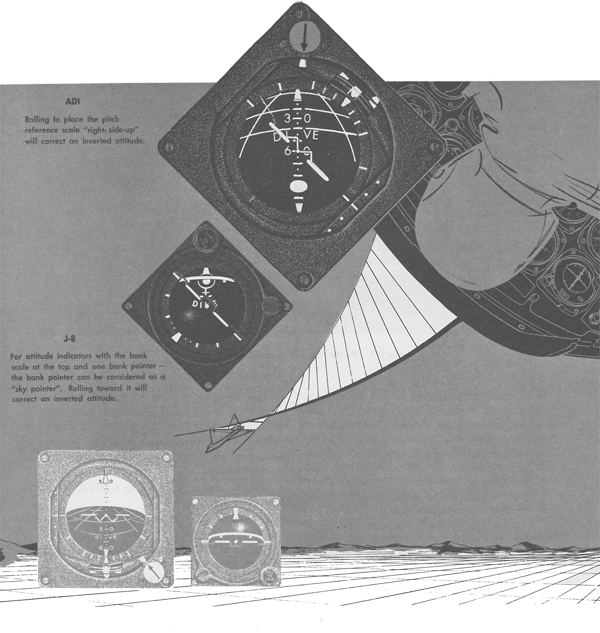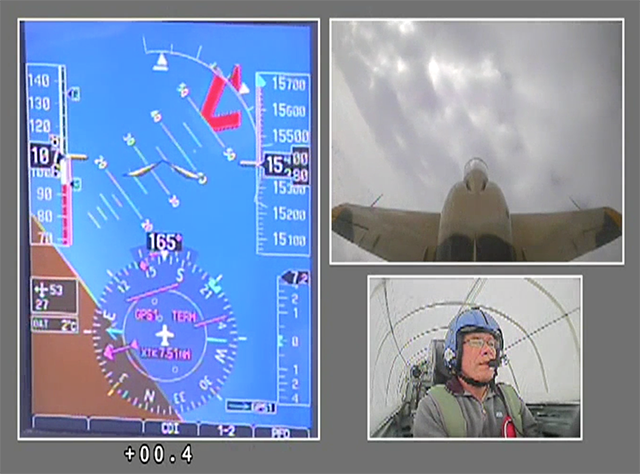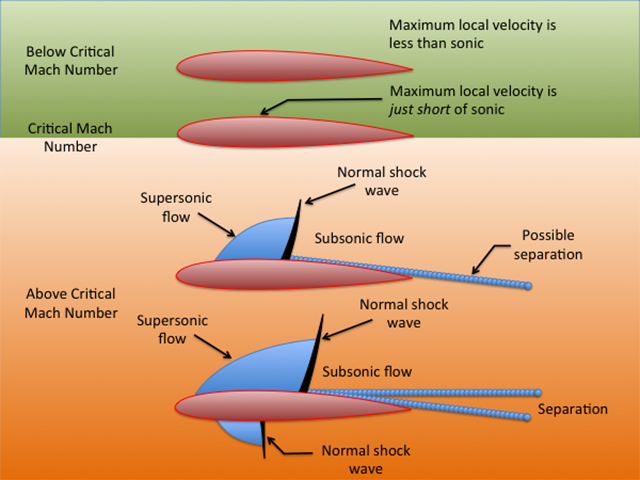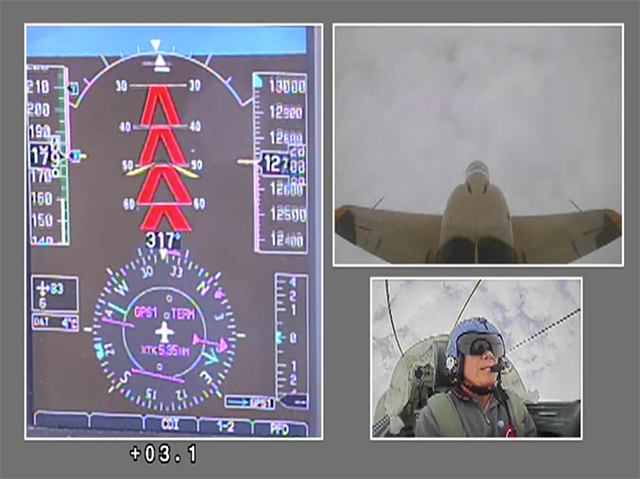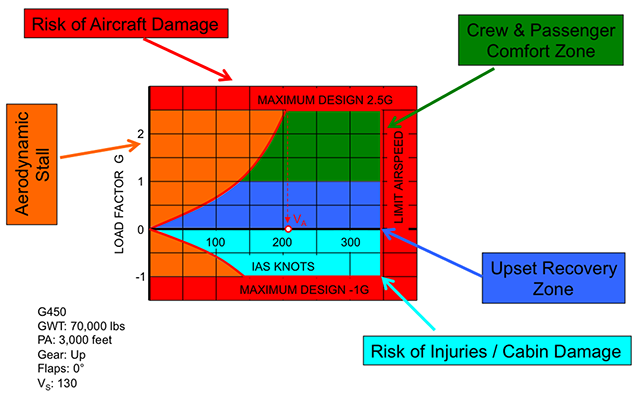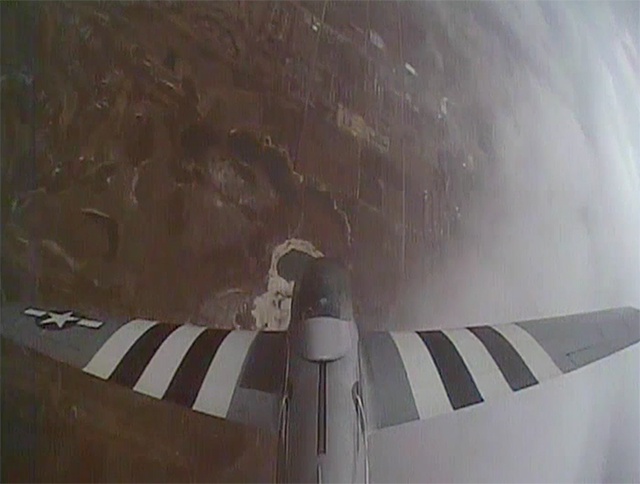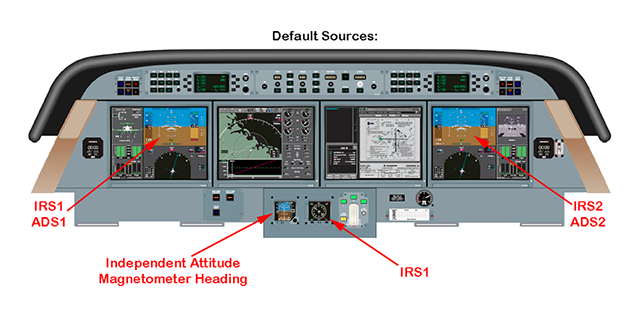If you've never practiced upset recovery in a high performance aircraft, you may not be prepared for the shock of hanging from your straps and you may not instinctively know how to unload the aircraft to safely recover. So you need to train in an airplane, the simulator is not good enough.
— James Albright

Updated:
2017-06-19
The quality of training varies and in some cases what is being taught can kill. So let's get this out of the way first: unless you are in a dog fight, the only time you need rudder in most jet aircraft is during takeoff, landing, or when dealing with an asymmetric engine failure. There is a company in Texas that preaches: "push, power, rudder, roll." Don't give them a dime, they don't know what they are talking about.
No doubt about it, you need to know this stuff for when you least expect it. And you need to know how to do it right the first time.

1
Upset Recovery Procedures
The key to getting it right the first time is to understand where things can go horribly wrong and understanding how to best make the airplane get back to right side up. Properly executed, each step of the process makes the next step easier. While acronyms sometimes serve more to confuse than clarify, you might consider this: RUTAP
1. Recognize
We used to have the student close his or her eyes, smoothly invert the airplane, cage the attitude indicator, flip the airplane right-side-up, and say "recover." Ah such fun. But in those days it was common to have an attitude indicator lie to you. These days some attitude indicators have no moving parts at all and a mean-time-between-failures measured in years. Still, you could have an instrument lie to you and you should verify that an unusual attitude actually exists.
From what used to be the holy grail of all Air Force instrument pilots:
An unusual attitude is an aircraft attitude occurring inadvertently. It may result from one factor or a combination of several factors such as turbulence, distraction of cockpit duties, instrument failure, inattention, spatial disorientation, lost wingman, and transition from VMC to IMC. In most instances, these attitudes are mild enough to recover by reestablishing the proper attitude for the desired flight condition and resuming a normal crosscheck.
Warning: It is imperative to immediately transition to instrument references any time you become disoriented or when outside visual references become unreliable.
Source: AFM 51-37, ¶2-8.
So how do you do this? Crosscheck!
- Crosscheck control instruments — Most transport category aircraft have three attitude indicators in the cockpit, each with an independent attitude references. Two out of three usually wins the vote. But what if all three are different?
- Crosscheck performance instruments — If the altimeter, airspeed indicator, heading indicator, and vertical velocity indicator are all steady, you are probably safe disregarding an attitude indicator that says you are in a descending spiral dive.
Keep in mind an unusual attitude can happen in clear conditions that can seem benign or nonthreatening, but it will be up to you to realize what the problem is. If you are at 38,000 feet in an Airbus A330, is a 16 degree angle of attack ever appropriate? See: Air France 447 Case Study. What about the opposite scenario? Say you are at a lower altitude with the throttles at idle, the speed brakes out, but the altimeter says you are maintaining altitude and the overspeed warning says you are accelerating well past redline? The attitude indicators say you are pretty much nose on the horizon and the sound of the airplane seems normal. See: Aero Peru 603. In both cases, knowing what is normal for the aircraft in any situation can be a life saver. What pitch attitude and power setting will keep you alive in the traffic pattern? (For many airplanes the answer is 10° nose up and go around thrust.) What about at altitude? (For many aircraft the answer is 3° to 5° nose up with a cruise setting.) Of course every airplane is different, but you should have a good idea of what is a normal pitch attitude and power setting for all phases of flight. If you have an Angle of Attack indicator, you should know how to use it. And don't discount your other senses. Low speeds are usually quiet and high speeds are usually noisy.
2. Unload
Once you've recognized the upset, the first thing you should do is disengage the autopilot, which could very well be the cause of the situation in the first place. Next, the best thing you can do in all but one situation is unload the airplane. In plain English, you need to push forward on the yoke or stick to put the wing as close to 0-G as possible. The only exception is when the upset leaves the airplane mostly right side up and pulling gains you immediate altitude when close to the ground.
The first and immediate benefit to unloading is removing the threat of an aerodynamic stall, which will send the airplane downward and risks a spin. Not all aircraft pitch down when stalled, some T-tailed, swept wing aircraft actually pitch up. Pitch up or down, a stall makes upset recovery more difficult and must be avoided.
The second benefit of unloading the wing is the aircraft's roll rate improves dramatically. You will lose less altitude when recovering an inverted, nose-low airplane by pushing (or pulling) to near 0-G, rolling crisply to right side up, and then pulling to level flight. This holds true even when significantly nose low. Where a typical business jet can take 5 seconds or more to roll upright with 1-G or more on the wing, the roll can be completed in 1 or 2 seconds when closer to 0-G.
3. Thrust
There are two problems with thrust in an unusual attitude: not having enough and having too much:
- Not enough thrust — If the nose is high and airspeed is rapidly declining, you are obviously in danger of stalling the wing but on some aircraft may also starve the engines of needed airflow. The solution, obviously, is to add thrust.
- Too much thrust — If the nose is low and airspeed is racing towards or beyond VMO, you are in danger of overspeeding a structure, to be sure. But there are other controllability issues to consider as well. Once again the solution is obvious: reduce thrust.
More about this: High Speed Flight.
Novice pilots are quick to grab a handful of throttles in an attempt to fix things as quickly as possible, but can make things worse if their initial reaction is wrong. Consider two alternate strategies when it comes to power lever management.
- If you have good auto-throttles that adjust thrust to maintain an airspeed, consider leaving them alone. In many late model systems, the auto-throttles are smarter than you are. If the nose is high and the speed is decreasing, the auto-throttles know what to do. They should be equally adept when the nose is low and the speed is increasing. Give them a chance. You can always override them after a second or two.
- If you don't have auto-throttles you can trust, consider taking a breath before reacting. If the situation is dire, it should be obvious you need to take action. If the nose is moderately high, say around 45° nose-up, cruise power isn't going to hurt you more than pulling to idle by mistake. If the nose is straight up and the only sound is your beating heart, adding power becomes a no brainer. Remember that under-wing mounted engines can induce pitch changes when thrust is changed.
Of course aircraft with speed brakes have another arrow in the quiver that can help in a nose-low situation. But grabbing the speed brake handle at the wrong moment can turn a moderate nose-high situation into a severe nose-low upset. Consider leaving the boards alone unless the nose is very low and the airspeed indicator and the "barber pole" are merging into a single pointer.
4. Ailerons
Notice that at 0.3 G the aircraft flies just fine below 1-G stall speed (the red line on the speed tape)
- The following aerodynamic principles and considerations are applicable to the recovery from unusual attitudes:
- The elimination of bank in a dive aids pitch control.
- The use of bank in a climb aids pitch control.
- Power and drag devices used properly aid airspeed control.
It should be emphasized that bank control will assist recovery.
Source: AFM 51-37, ¶2-8.
Waiting until step four to roll the aircraft has two benefits that some pilots may not have considered. It gives you a second to decide which direction you need to roll and unloading the wing makes the roll faster. Note that the roll is handled with ailerons only. Fighter pilots have long known the danger of "rolling G's" but the risk of damage is even higher in an airplane not designed for combat maneuvering. VA, maneuvering speed, does not consider any rudder input at all and loading the wing with any kind of yaw risks losing airplane parts.
In a nose-high recovery simply pushing forward with wings level takes time and risks running into negative G limits or sending unsecured objects in the cabin flying. You need to increase bank to help the nose fall to the horizon. In a nose-low recovery, there are various methods for recognizing which direction to roll, such as "roll to blue" or "roll to the sky pointer." These are aircraft dependent and pilots must know how their attitude systems will react to an unusual attitude. Once you've determined where the sky is, roll in the shortest direction to level the wings.
5. Pitch
Techniques of recovery should be compatible with the severity of the unusual attitude, the characteristics of the aircraft, and the altitude available for the recovery. The procedures outlined in this section are not designed for recovery from controlled tactical maneuvers.
Source: AFM 51-37, ¶2-8.
The last step in the nose-low recovery process happens only once the airplane is upright. If imminent ground contact is not a threat, keeping within the aircraft's G-limits will not only make the recovery possible, but will keep the airplane flyable once recovered.
In a nose-high recovery you are in a race with time to get the aircraft's attitude under control before you run out of airspeed. How far do you roll to help the nose fall back to the horizon? Most upset courses use small, nimble fighter aircraft that can "knife-edge" beautifully. Rolling to 90° of bank and holding close to zero-G allows the nose to fall back to the horizon quickly and removes the threat of a stall. A quick snap of the wrist returns the airplane to level flight. That may not be true with your aircraft. A typical Gulfstream, for example, is quite a bit heavier and rolls much more slowly than a P-51 Mustang. If you allow the Gulfstream to knife-edge to the horizon, the momentum of the falling nose may put you into nose-low upset by the time you roll wings level. For these aircraft, rolling to 60° of bank may get the nose down expeditiously while allowing the pilot enough time to judge the roll out.
Anytime the nose is above the horizon the chance of an aerodynamic stall is increased. But just because you are below the stall speed listed in your flight manual, doesn't mean you will be in a stall.
2
Near Zero-G
Pilots are taught early the dangers of aerodynamic stall and the need to keep air flowing over the wing. Most understand there is a magic airspeed above which "airplane happy" and below which "airplane unhappy." While that knowledge may be good enough for an introductory flight lesson, it misses an important point. An airfoil does not stall at a magic airspeed, it stalls at a particular angle of attack. Yes the speed changes with altitude and aircraft weight. But it also changes with G-loading. The best way to figure when an airplane really stalls is by looking at its operating envelope.
An aircraft's operating envelope is plotted on a V-G diagram, so called because it plots airspeed (V) against load factor (G). There is a unique V-G diagram for every combination of gross weight, configuration, and altitude. The construction of a V-G diagram is detailed in 14 CFR 25.333 but manufacturers are not required to provide pilots with this information. That is too bad, because V-G diagrams speak volumes on how to keep an airplane flying. You can construct your own using 25.333, your aircraft manual's limitations and stall performance numbers.
(I walk you through the process: Operating Flight Strength (V-g / V-n Diagrams).
Fortunately, you need only see an example of a similar aircraft's V-G diagram to learn the necessary lessons. A Gulfstream G450 behaves conventionally, tolerating between -1 and 2.5 G's when in the clean configuration, and makes for a good example passenger carrying aircraft.
Looking at the example V-G Diagram for a sample aircraft, we see the red area depicts where we can exceed airspeed and G-limits, risking damage to the airplane. The orange area illustrates where we risk aerodynamic stall. What remains – the cyan, blue, and green – is the aircraft's operating envelope. The airplane is flyable anywhere in this region. But we normally limit ourselves to the green zone, where we are flying faster than the aerodynamic stall, slower than maximum operating speed, and between 1G and the airplane's maximum load factor. We choose not to operate in the negative-G zone, the cyan, because we don't want our passengers or any unsecured objects in the cabin flying about. That leaves us with the blue area, where we are at less than 1-G but more than 0-G. We as pilots try very hard to stay out of that zone too, because it can be uncomfortable and risks scaring our passengers. But we should become familiar with it, especially just above 0-G, because it can save you following an aircraft upset.
Notice that our aircraft has a 1-G stall speed of 130 knots under the sample conditions. Let's say an upset leaves the nose very high and your airspeed is 200 and heading south fast. After you've rolled the aircraft and the nose is falling nicely you find the speed approaching 130 knots. Reducing the load factor to 0.5-G reduces your stall speed to 92 knots. That half-a-G bought you nearly 40 knots of airspeed.
So we can agree that unloading the aircraft to less than 1-G gains you a faster roll rate and greater stall margin. We also realize going to less than 0-G risks passenger injuries from flying objects and people in the cabin. But how do we know we are unloading enough and not too much? As good as current simulator technology is, you cannot simulate sustained G forces. There is no substitute for actual flight experience, hanging from the straps to know what negative G's feel like, or just light in the pants to judge a fraction of a G.
Feeling sustained negative G forces not only gives pilots an experience-based seat of the pants barometer for unloading a wing, it also prepares them to overcome what can paralyze pilots without that training. . .
3
Fear
Highly experienced pilots who have never been inverted or felt 0-G in a jet for more than a second or two can be prone to air sickness and an inability to complete memorized recovery tasks. Pilots with Air Force or Navy training tend to react properly, even decades after their "yanking and banking" days. The difference is the military pilots were subjected to desensitization that made upside-down just another phase of flight.
Pilots are normally trained to fly in the middle of the air and told to avoid the edges. (The edges are the ground, water, buildings, and extraterrestrial space.) Because you never truly risk death in a simulator, you are not properly trained for dealing with an aircraft upset until you've been trained in a high performance airplane. There is risk in flying any airplane and when that airplane is pointed to the edge, every pilot's inner warning and caution system turns from amber to red. Every time you deal with that inner warning system, you get better at it. So practice in an airplane in a controlled environment before it happens when you least expect it.
Recovering from a Wake Turbulence Upset
An encounter with wake turbulence usually results in induced rolling or pitch moments; however, in rare instances an encounter could cause structural damage to the aircraft. In more than one instance, pilots have described an encounter to be like “hitting a wall”. The dynamic forces of the vortex can exceed the roll or pitch capability of the aircraft to overcome these forces.
During test programs, the wake was approached from all directions to evaluate the effect of encounter direction on response. One item common to all encounters, was that without a concerted effort by the pilot the aircraft would be expelled from the wake.
Counter control is usually effective and induced roll is minimal in cases where the wingspan and ailerons of the encountering aircraft extend beyond the rotational flow field of the vortex. It is more difficult for aircraft with short wingspan (relative to the generating aircraft) to counter the imposed roll induced by the vortex flow.
Pilots of short span aircraft, even of the high performance type, must be especially alert to wake-turbulence encounters.
The following is from an advance copy of an upcoming EASA SIB on Enroute Wake Turbulence (not yet released)
- It has been demonstrated during flight tests that if the pilot reacts at the first roll motion, when in the core of the vortex, the roll motion could be amplified by this initial piloting action. The result can be a final bank angle greater than if the pilot would not have moved the controls.
- In-flight incidents have demonstrated that pilot inputs may exacerbate the unusual attitude condition with rapid roll control reversals carried out in an “out of phase” manner.
- Avoid large rudder deflections that can create important lateral accelerations, which could then generate very large forces on the vertical stabiliser that may exceed the structural resistance. Although some recent aircraft types are protected by fly-by-wire systems, use of the rudder does not reduce the severity of the encounter nor does it improve the ease of recovery.
Source: Flight Service Bureau, Note to Members #24]
4
Video Examples
I was first trained to handle jet upsets in 1979 flying a T-37 and later a T-38. Thirty-five years later I found the lessons remained in my muscle memory . . .
L-39 Nose High Recovery — (From Upset Training in 2015)
L-39 Nose Low Recovery — (From Upset Training in 2015)
P-51 Nose High Recovery — (From Upset Training in 2015)
5
G450 Example
The recognition step in some high tech cockpits can have a few traps. In the G450, for example, the back up instruments do not represent what you might think. The standby instrument you would think is a good tie breaker for heading information simply parrots the pilot's instruments.
Verify
The pilot’s side defaults to IRS1, ADS1, and RAD ALT1 selected. The copilot’s side defaults to IRS2, ADS2, and RAD ALT2 selected.
Source: G450 Aircraft Operating Manual, ¶2B-05-50, pg. 65
The SFD display presents a standard Primary Flight Display (PFD) format with an airspeed tape and digital airspeed readout on the left and an altitude tape and digital altitude readout on the right. The SFD contains an independent internal reference system for attitude data, a stand-alone magnetic heading reference from a vertical stabilizer mounted magnetometer, and airspeed and altitude data derived from the dedicated connections to pitot/static system.
The Electronic Bearing and Distance Indicator (EBDI) incorporates a standard compass card with airplane symbol, two bearing pointer needles, two range / DME indicators and a digital heading indicator with heading reference notation. . . . [In the AUTO position] - automatically selects heading source with a priority of IRS #1, IRS #2, or STBY.
Source: G450 Aircraft Operating Manual, ¶2A-34-30 ¶2, ¶3.
When looking for an independent indication of aircraft attitude, heading, altitude, and airspeed, the SFD is your go to location. The EBDI defaults to IRS #1 and is not a valid tie breaker unless you switch it to STBY.
Recover
- Nose High Unusual Attitude Recovery:
- Nose Low Unusual Attitude Recovery:
Increase power and angle of bank, not to exceed 90° in the same direction as the turn. As the nose of the aircraft falls below the horizon, decrease bank to wings level and nose on the horizon. This type of recovery will avoid negative G-Forces.
Smoothly reduce power, leveling the wings, easing the nose up to the horizon. Use the speed brakes to assist in reducing the speed if required.
Source: G450 Aircraft Operating Manual, ¶06-03-50
My technique is to leave the power levers alone and let the autothrottles do the thinking for me. They have a better track record than I do in these situations. In the simulator this has always worked.
References
(Source material)
Air Force Manual (AFM) 51-37, Instrument Flying, 1 December 1976
En route Wake Turbulence Note to Members #24, Flight Service Bureau.
Gulfstream G450 Aircraft Operating Manual, Revision 35, April 30, 2013.
Please note: Gulfstream Aerospace Corporation has no affiliation or connection whatsoever with this website, and Gulfstream does not review, endorse, or approve any of the content included on the site. As a result, Gulfstream is not responsible or liable for your use of any materials or information obtained from this site.


